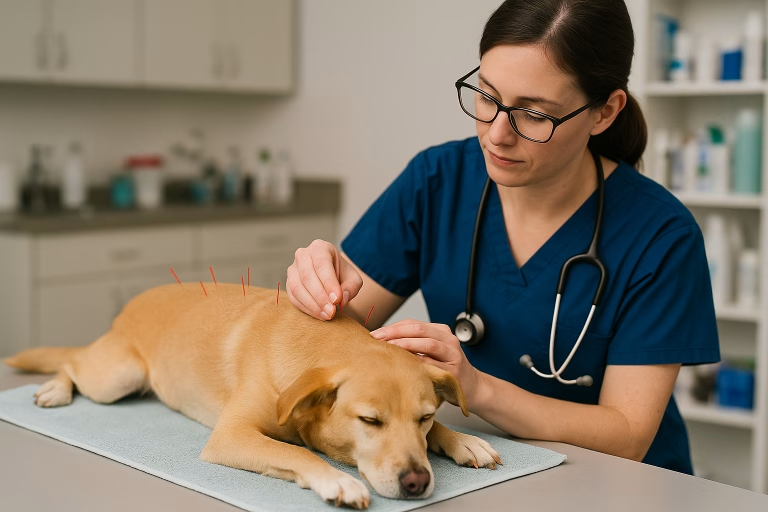
Understanding Toenail and Foot Fungal Infections
Fungal infections of the toenails and feet are not just annoying—they can be persistent, uncomfortable, and even embarrassing. If you’ve ever dealt with itching between your toes, flaky skin on your feet, or thick, yellow toenails, you’re not alone. These infections are very common, especially in people who spend a lot of time in warm, damp environments like gyms, pools, or inside tight shoes.
There are two main types to be aware of:
- Athlete’s Foot (Tinea Pedis): A contagious skin infection that usually starts between the toes and can cause itching, burning, redness, and cracking. It often spreads to the soles and sides of the feet if not treated.
- Toenail Fungus (Onychomycosis): A slow-growing infection under the nail that leads to discoloration, thickening, brittleness, and sometimes foul odor. It can spread from one nail to another and is notoriously tough to get rid of without consistent treatment.
These conditions can be triggered by several factors:
- Sweaty feet and lack of ventilation
- Walking barefoot in public places like showers or locker rooms
- Sharing socks or shoes
- Poor foot hygiene
- Medical conditions like diabetes or a weakened immune system
Why Treatment Matters
Ignoring a fungal infection allows it to spread and worsen. Over time, it may lead to pain, secondary bacterial infections, or permanent nail damage. That’s why it’s important to treat it early—with the right product and proper foot care.
What This Guide Covers
In this article, you’ll find a pharmacist-curated list of the Top 10 Antifungal Products for 2025. We’ll walk you through:
- How each treatment works
- What makes it unique or effective
- Possible side effects to watch for
- Simple tips to get the best results
Whether you’re dealing with stubborn nail fungus or recurring athlete’s foot, this guide will help you choose the best treatment option for fast relief and long-term prevention.
Common Causes of Toenail and Foot Fungal Infections
Fungal infections of the feet and nails are often more than just random occurrences—they usually develop because of specific habits, environments, or health conditions that make it easier for fungi to grow. These infections thrive in warm, dark, and damp places, making your feet—especially inside shoes—an ideal target.
Understanding these common causes can help you prevent infections from starting or coming back.
What Triggers Fungal Infections?
- Sweaty Feet and Excess Moisture
Fungi love damp environments. If your feet sweat a lot, especially in closed shoes, moisture builds up and creates the perfect breeding ground for fungal growth. - Tight or Non-Breathable Footwear
Shoes that are tight or made from materials that don’t allow airflow can trap heat and sweat, making your feet more vulnerable to infection. - Walking Barefoot in Public Areas
Places like gyms, communal showers, swimming pools, and locker rooms are full of fungal spores. Walking barefoot exposes your skin and nails directly to these harmful microorganisms. - Sharing Personal Items
Using someone else’s socks, shoes, towels, or nail clippers can spread fungal spores from one person to another. Always use your own personal hygiene items. - Poor Foot Hygiene
Not washing your feet regularly or failing to dry them properly after bathing allows moisture and dirt to build up, increasing the risk of infection. - Cracked Heels, Cuts, or Nail Trauma
Fungi can enter through tiny cuts, skin cracks, or gaps between the nail and nail bed. Damaged nails are more likely to get infected. - Compromised Immune System
People with diabetes, poor circulation, or weakened immune systems are more prone to fungal infections and may have a harder time healing from them. - Wearing Wet Socks or Shoes for Long Periods
Damp socks and shoes that stay wet after workouts or rainy weather provide an ideal space for fungus to grow.
Pro Tip:
Keep your feet clean, dry, and protected—especially in public spaces. Preventing exposure is just as important as treating existing infections.
Common Symptoms of Toenail and Foot Fungal Infections
Fungal infections can start off mild and easy to overlook, but they often worsen over time if not treated. Whether it’s athlete’s foot or toenail fungus, knowing the signs early can help you choose the right treatment and stop the infection from spreading.
Below are the most frequent symptoms for both skin-based foot fungus (athlete’s foot) and nail fungus (onychomycosis):
🦶 Symptoms of Athlete’s Foot (Tinea Pedis):
- Persistent itching between the toes, especially the 4th and 5th toes
- Red, inflamed skin that may appear shiny or raw
- Dry, scaly patches on the bottom or sides of the feet
- Peeling or flaking skin, often mistaken for dry skin
- Stinging or burning sensation, especially after removing shoes
- Small fluid-filled blisters that may burst and crust over
- Unpleasant odor due to trapped moisture and fungal growth
- Cracks or splits in the skin, making it painful to walk
💅 Symptoms of Toenail Fungus (Onychomycosis):
- Yellow or white discoloration starting at the tip or sides of the nail
- Thickened nail texture, making it harder to cut or maintain
- Brittle or crumbly edges that break easily
- Dark spots or streaks under the nail due to debris buildup
- Rough or misshapen nail surface, often appearing deformed
- Nail detachment (onycholysis)—the nail may lift off the nail bed
- Mild to moderate pain, especially when pressure is applied
- Foul smell in severe cases or when bacteria are also present
Why It Matters:
Left untreated, these symptoms can lead to chronic infections, secondary bacterial issues, and permanent nail damage. That’s why early recognition and consistent treatment are essential for long-term foot health.
Top 10 Pharmacist-Recommended Antifungal Products (2025)
1. Lamisil AT Antifungal Cream (Terbinafine Hydrochloride 1%)
How it works: Terbinafine disrupts fungal cell wall synthesis by inhibiting squalene epoxidase, leading to fungal death. Highly effective against dermatophytes.
What makes it special: Known for its rapid relief and strong cure rate with once-daily application.
Side effects: Mild irritation, itching, or burning at the application site.
Counseling Points:
- Clean and dry the affected area before use
- Apply a thin layer once daily
- Continue use for the full recommended course even if symptoms improve early
2. Lotrimin Ultra Antifungal Cream (Butenafine Hydrochloride 1%)
How it works: Inhibits enzyme responsible for building fungal cell membranes, stopping cell growth.
What makes it special: Excellent for interdigital athlete’s foot, and works with fewer daily applications.
Side effects: Burning, stinging, or redness may occur.
Counseling Points:
- Use once or twice daily
- Wash hands after application
- Avoid tight footwear and allow feet to breathe
3. Tinactin Antifungal Powder Spray (Tolnaftate 1%)
How it works: Prevents fungal infections by inhibiting fungal growth and maintaining dryness.
What makes it special: Powder form helps keep feet dry, making it ideal for prevention.
Side effects: Skin irritation or dryness in sensitive users.
Counseling Points:
- Shake can well before each use
- Spray after bathing and before wearing socks
- Use daily to prevent recurrence
4. Fungi-Nail Anti-Fungal Solution (Undecylenic Acid 25%)
How it works: This fatty acid breaks down fungal cell membranes and stops further spread.
What makes it special: High concentration and brush-on applicator for targeted use.
Side effects: Itching, burning, or irritation may occur with prolonged use.
Counseling Points:
- Apply to surrounding skin and under nail tips
- Ensure complete coverage and allow it to dry
- Avoid occlusive bandages or tight shoes
5. Kerasal Fungal Nail Renewal (Urea and Propylene Glycol)
How it works: Urea softens thickened nails while propylene glycol hydrates and restores nail clarity.
What makes it special: Cosmetic improvement without harsh chemicals. Best paired with antifungals.
Side effects: Minimal; may cause dryness or peeling.
Counseling Points:
- Not a cure, but enhances appearance
- Use nightly after cleaning the nail
- Combine with antifungal treatment for better results
6. Excilor Fungal Nail Treatment Pen (Ethyl Lactate & Acetic Acid)
How it works: Lowers pH in the nail bed, creating an environment unfriendly to fungal growth.
What makes it special: Deep penetration into the nail without filing. Fast-drying and odorless.
Side effects: Occasional mild stinging or discoloration.
Counseling Points:
- Apply twice daily for up to 12 weeks
- Let dry before covering with socks or shoes
- Avoid water exposure for 30 minutes after use
7. Dr. Scholl’s Fungal Nail Revitalizer (Hydrogen Peroxide & Lactic Acid)
How it works: Breaks down debris and discoloration while exfoliating the nail surface.
What makes it special: Easy dual-step applicator system with a visible brightening effect.
Side effects: Temporary whitening or tingling of the nail.
Counseling Points:
- Use daily for noticeable results
- Combine with antifungal if fungus is active
- Do not apply over nail polish
8. Purely Northwest Toenail Fungus System (Tea Tree Oil Blend)
How it works: Natural oils such as tea tree, oregano, and eucalyptus act as antifungal and antibacterial agents.
What makes it special: All-natural system includes soak, wash, and oil. Gentle and holistic approach.
Side effects: Rare skin sensitivity or allergic reaction to essential oils.
Counseling Points:
- Follow full regimen for best results
- Perform a patch test before use
- Use consistently for several weeks
9. Clotrimazole Antifungal Cream (Clotrimazole 1%)
How it works: Stops the growth of fungi by inhibiting ergosterol synthesis in cell membranes.
What makes it special: Affordable and widely available for skin fungal infections.
Side effects: Redness, itching, or burning on sensitive skin.
Counseling Points:
- Use twice daily
- Clean and dry the area before application
- Continue for 2 weeks after symptoms resolve
10. Tolcylen Antifungal/Nail Renewal Solution
How it works: Combines antifungal tolnaftate with hydrating agents like urea and lactic acid for dual action.
What makes it special: Targets both the fungus and cosmetic improvement of the nail.
Side effects: Rare, but may include irritation or peeling.
Counseling Points:
- Apply daily for at least 4-6 weeks
- Avoid use of nail polish during treatment
- File the nail surface weekly for better absorption
When to See a Doctor for Toenail or Foot Fungus
Over-the-counter antifungal creams and sprays work well for many people, especially when used early and consistently. But sometimes, an infection can become stubborn or serious enough to require professional medical attention. Knowing when to seek help from a doctor can save you time, discomfort, and long-term damage to your nails or skin.
Here are signs that it’s time to make an appointment with your healthcare provider:
🚩 You should see a doctor if:
- You’ve been using an antifungal product for 2–4 weeks with no improvement
→ Persistent symptoms may mean the infection is resistant or deeper than OTC products can reach. - Your symptoms are getting worse despite treatment
→ Increasing redness, scaling, or discomfort could signal a more aggressive infection. - There’s pain, swelling, or warmth around the nail or foot
→ These could be signs of a secondary bacterial infection that needs antibiotics. - You notice pus, fluid drainage, or an unpleasant odor
→ These are signs of an active infection that requires medical care. - The nail is thickening, crumbling, or detaching from the nail bed
→ Severe nail changes may need prescription oral antifungals or even nail removal. - More than one toenail is affected, or it’s spreading to fingernails
→ Widespread infection may need a stronger, systemic treatment approach. - You have underlying health conditions like diabetes, poor circulation, or a weakened immune system
→ These conditions increase the risk of complications and should not be ignored. - You have frequent recurrences or chronic fungal infections
→ Your doctor can help identify underlying causes and offer long-term management options. - You experience bleeding, cracked skin, or painful blisters
→ These symptoms may indicate damage or a mixed infection that needs targeted care. - The discoloration is spreading up the nail or onto the skin
→ Fungal infections that spread quickly can lead to more serious issues if not treated promptly.
💬 What Can a Doctor Do?
A healthcare provider may:
- Perform a fungal culture or lab test to confirm the type of fungus
- Prescribe oral antifungals, like terbinafine or itraconazole, for deep nail infections
- Recommend laser therapy or debridement (removal of infected nail portions)
- Suggest preventive measures for recurring infections
Bottom Line:
If your infection isn’t going away—or you’re not sure what you’re dealing with—don’t wait. A quick visit to your doctor can help prevent the problem from getting worse and get you back on track to healthy feet and nails.
Lifestyle Tips to Prevent Foot and Toenail Fungus for Better Living
Foot and toenail fungus can be stubborn, and even if treatment works, infections often come back without the right daily habits. The good news? Small lifestyle changes can make a big difference in both preventing fungal infections and speeding up recovery. These tips are not only easy to follow but can also improve your overall foot health.
By keeping your feet clean, dry, and protected, you’ll reduce the chances of future infections and promote faster healing if you’re already treating one.
🧼 Smart Hygiene Habits for Healthy Feet
- Wash your feet daily, especially after workouts or long days in closed shoes
→ Use mild soap and warm water to remove sweat, dirt, and potential fungi. - Dry your feet completely, especially between the toes
→ Moisture trapped between the toes is a common cause of athlete’s foot. - Trim your toenails straight across, not too short
→ This prevents nail trauma and keeps fungi from entering under the nail. - Use a separate towel for your feet, and wash it regularly
→ Prevents cross-contamination with the rest of your body.
🧦 Footwear and Sock Tips
- Wear moisture-wicking or cotton socks
→ These help keep your feet dry throughout the day. - Change socks at least once per day, more if your feet sweat a lot
→ Keeping feet dry limits fungal growth. - Avoid tight or non-breathable shoes
→ Look for shoes made with mesh or leather that allow air circulation. - Rotate your shoes
→ Give shoes 24–48 hours to dry out between uses. - Disinfect shoes regularly with antifungal sprays or powders
→ Fungi can linger in your shoes and reinfect your feet.
🩴 Protective Measures in Public Spaces
- Always wear flip-flops or shower shoes in public showers, gyms, or pool areas
→ These environments are hotspots for fungal transmission. - Avoid walking barefoot in locker rooms or hotel bathrooms
→ Even a small cut can let fungi in.
🛠️ Personal Grooming and Tool Care
- Don’t share nail clippers, foot files, or socks
→ Fungal spores can easily spread through shared items. - Sanitize your grooming tools after each use
→ Use alcohol wipes or soak tools in disinfectant to kill hidden fungi. - Avoid nail salons with poor hygiene standards
→ Ensure tools are sterilized between clients.
💡 Bonus Lifestyle Tips
- Allow your feet to “air out” at home
→ Go barefoot or wear breathable slippers to let your feet dry. - Use antifungal powder or foot spray if you’re prone to sweating
→ Preventive use can reduce the chance of reinfection. - Keep blood sugar levels in check if you have diabetes
→ High sugar levels can weaken immune response and increase fungal risk. - Inspect your feet and nails weekly
→ Early detection = easier treatment!
Long-Term Tip:
Even after the infection clears, continue these habits to prevent future breakouts. Fungal spores can live in shoes, socks, and on the skin for weeks—even months—so ongoing prevention is key.
Final Thoughts: Winning the Battle Against Foot and Toenail Fungus
Dealing with toenail and foot fungal infections can be frustrating—but the good news is, with the right approach, you can treat the infection, improve your nail and skin health, and prevent it from coming back.
Consistency, hygiene, and the right product are the keys to success. Whether you’re just starting treatment or trying to prevent a recurrence, these takeaways can help guide you:
✅ Key Takeaways for Effective Treatment:
- Start treatment early as soon as you notice symptoms—fungus is easier to eliminate in the early stages.
- Choose the right antifungal product based on your specific symptoms (skin vs. nail, mild vs. severe).
- Stick to your treatment plan—most products need to be used daily for several weeks.
- Don’t stop early even if symptoms improve—completing the full course helps prevent regrowth.
- Follow proper foot hygiene during and after treatment to support healing and reduce reinfection risk.
🦶 Ongoing Prevention is Just as Important:
- Keep your feet clean and dry every day.
- Rotate shoes and wear moisture-wicking socks.
- Disinfect shared tools and avoid walking barefoot in public areas.
- Watch for recurring symptoms and treat them quickly.
- If needed, consult a doctor for prescription-strength treatment.
By combining over-the-counter treatments with smart lifestyle changes, you can protect your feet, restore nail health, and stay fungus-free for the long run.
Healthy feet aren’t just about comfort—they’re part of living your best life, step by step.
#toenailfungus #athletesfoot #footcare #antifungalcream #nailfungustreatment #pharmacistrecommended #naturalantifungal #fungalnail #foothealth #lamisil #lotrimin #kerasal #tinactin #funginail #toenailcare









